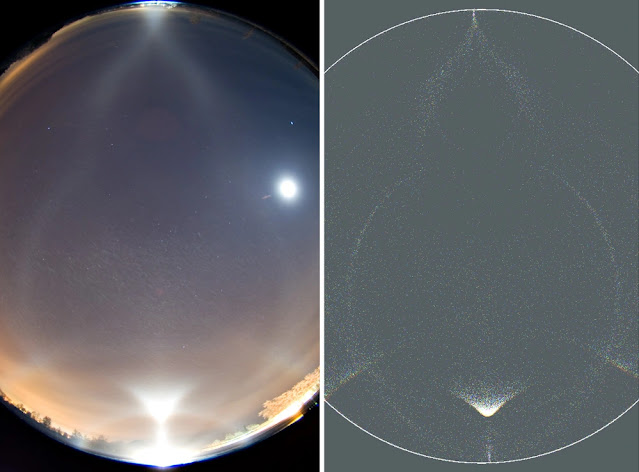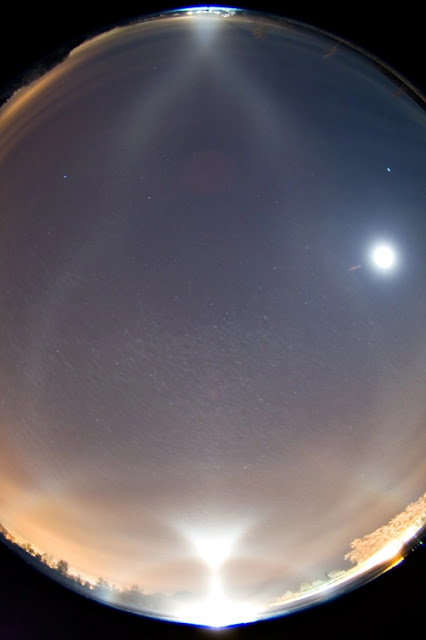This one came as an almost complete surprise. I had seen moment before parhelia from streetlight when driving, but they were weak. The pillars were almost non existent, so when I parked at the hospital area and turned on the long lights, I was surprised to see the crystals glitter in the beam in a very much all sky display manner. This was confirmed as I walked the beam.
Taking on the spotlight took some time and I did not get much photos. There was also serious light pollution. Just a bit further away towards the lake it would have been darker, but you have to take the first photos where ever the display is, or you risk not getting photos at all (this wisdom Luomanen told me recently).
Simulations of the display are made with Jukka Ruoskanen's HaloPoint
2.0. The most interesting point to me is the 5 degree rotational Parry
population that had to be used to get the intensity of the diffuse B arc
right. Nothing new here, of course, this kind of effect is pretty
common in the spotlight displays. Lessen the rotation and they turn into
subanthelic arcs. The Parry population makes also right kind of
brightenings at Tape arc locations. Should they be called Tape arcs or
46° supralateral arc, is probably a matter of taste.
In
simulation the subhelic /helic arc (they overlap at 0° light elevation)
is too intense as always. Perhaps the Lefadeux hollowed crystal
simulations could fix it. I have included also simulations showing the
diffuse anthelic arc A and B components (well, actually they are
independent halos), which are clearly discerned in the photo. In sun
displays these are less easy to distinguish, which is why we normally
talk only about the diffuse arcs.
Temperature was around -22° C. It is rather unusual to get column (or Parry) stuff at these temps.






[…] I got the best match for the display using two Parry populations in the HaloPoint software: one with strictly oriented crystals and other with 4 degree rotation. The contribution of these two populations are dissected in the image below, as well as of the other two populations used in the simulation. The 4 degree rotational population has an orientation that makes halos look like an intermediate between Parry and column. These two populations were necessary to make the subanthelic arc look right. It is actually quite typical that you have use about 4-5 degree rotating Parry crystals to simulate diamond dust displays. Earlier I have analysed one case from 2010 in Tampere. […]
ReplyDelete